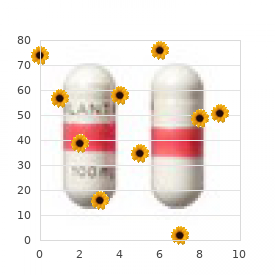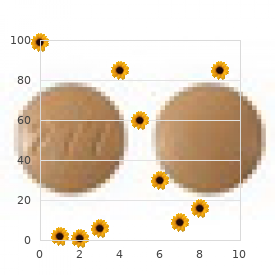





|
STUDENT DIGITAL NEWSLETTER ALAGAPPA INSTITUTIONS |

|
"Ventolin 100mcg generic, asthma symptoms mayo".
K. Gunnar, M.B. B.CH., M.B.B.Ch., Ph.D.
Deputy Director, New York University School of Medicine
In the second asthma 9 year old buy ventolin 100 mcg amex, a stabilized tertiary cation could be formed (so either E1 or E2 might occur) asthma definition religion buy ventolin 100mcg line, but no strong base is present asthmatic bronchitis 37 cheap ventolin 100 mcg with amex, so the mechanism must be E1 asthma 504 cheap ventolin 100mcg line. The hydroxyl group is never a leaving group in E2 eliminations, since they have to be done in base. Toluenesulfonate esters (tosylates) can be made from alcohols (with TsCl, pyridine). You have already met tosylates in Chapter 17 because they are good electrophiles for substitution reactions with nonbasic nucleophiles. In the presence of a base (usually triethylamine, Et3N) it reacts with alcohols to give methanesulfonate esters, but the mechanism differs from the mechanism with TsCl. The sulfene is highly electrophilic at sulfur, and will react with any alcohol (including tertiary alcohols, which react very slowly with TsCl). In the second, the mesylate is formed and eliminated in the same step using Et3N, to give a precursor to a sugar analogue. The problem here, nicely solved by the use of the mesylate, is that the molecule contains an acid-sensitive acetal functional group. An acid-catalysed reaction would also have risked eliminating methanol from the other tertiary centre. E1 and E2 differ in the order of their rate equations with respect to the base, so one way of finding out if a reaction is E1 or E2 is to plot a graph of the variation of rate with base concentration. But this can be difficult with E1 reactions because the base (which need be only very weak) is usually the solvent. More detailed evidence for the differences between reaction mechanisms comes from studying the rates of elimination in substrates that differ only in that one or more of the protons have been replaced by deuterium atoms. Kinetic isotope effects are the changes in rate observed when a (1H) hydrogen atom is replaced by a (2H) deuterium atom in the same reaction. It may come as a surprise to find that this is not quite true: isotopes do differ chemically, but Changing H for D can affect the rate of the reaction only if that H (or D) is involved in the rate-determining step. The theoretical maximum is about 7 for reactions at room temperature in which a bond to H or D is being broken. For example, the rates of these two eliminations can be compared, and kH/kD turns out to be 7. EtO Br rate = k H EtO rate = k D Br D D H H How to distinguish E1 from E2: kinetic isotope effects H(D) E1 reactions can be stereoselective the kinetic isotope effect tells us that the CH (or CD) bond is being broken during the rate-determining step, and so the reaction must be an E2 elimination. The minimum vibrational energy a bond can have is called the zero point energy (E0) given by the 1 expression E0 = 2 h. In order to break a covalent bond, a certain amount of energy is required to separate the nuclei from their starting position. This energy has to raise the vibration state of the bond from the zero point energy to the point where it breaks. Because the zero point energy of a CH bond is higher than that for a CD bond, the CH bond has a head start in energy terms. The energy required to break a CH bond is less than that required to break a CD bond, so reactions breaking CH bonds go faster than those breaking CD bonds, provided bond breaking is occurring in the rate-determining step. This is only the case in E2 reactions, not E1 reactions, so the general rule is that, if changing CH for CD changes the rate of the elimination, the reaction must be E2 and not E1. For others, there may be a choice of two (or more) alkene products that differ either in the location or stereochemistry of the double bond. We shall now move on to discuss the factors that control the stereochemistry (geometry) and regiochemistry (that is, where the double bond is) of the alkenes, starting with E1 reactions. To assign E or Z to tri- or tetrasubstituted alkenes, the groups at either end of the alkene are given an order of priority according to the same rules as those outlined for R and S in Chapter 16. If the two higher priority groups are cis, the alkene is Z; if they are trans the alkene is E. A reaction that can choose which it forms is therefore likely to favour the formation of E-alkenes. For alkenes formed by E1 elimination, this is exactly what happens: the less hindered E-alkene is favoured.


Both the bonding and the nonbonding the molecular orbitals of the allyl system: the allyl anion orbitals are now fully occupied asthma treatment in er 100mcg ventolin sale. The answer is slightly more complicated than that for the allyl cation because now we have two full molecular orbitals and the electron density comes from a sum of both orbitals asthma symptoms for kids ventolin 100mcg without prescription. It is this orbital that contains the electrons highest in energy and so most reactive asthma treatment 2013 purchase ventolin 100 mcg online. In this orbital there is no electron density on the middle carbon; it is all on the end carbons asthmatic bronchitis coughing up blood buy discount ventolin 100mcg on line. But the structures suggest localized bonds and charges 1 2 1 2 these two structures emphasize the equivalence of the bonds and that the charge is spread out A summary of ·· There are no the allyl anion system bonds-both CC bonds are the localized double and single · · · same and in between a double and single bond Both end carbons are the same the four electrons in the system are spread out over all three carbon atoms. Notice also that the central carbon in the allyl cation and the anion have almost identical chemical shifts-142 and 147 p. Other allyl-like systems the carboxylate anion You may already be familiar with one anion very much like the allyl anion-the carboxylate ion formed on deprotonating a carboxylic acid with a base. In this structure we again have a double bond adjacent to a single bond but here oxygen atoms replace two of the carbon atoms. Compare with the differences between the molecular orbitals for ethene and a carbonyl, p. There are two ways of representing the structure: one using formal charges, the other using a dative bond. Notice in each case that one oxygen is depicted as being doubly bonded, the other singly bonded. Drawing both oxygen atoms doubly bonded is incorrect-nitrogen cannot have five bonds since this would represent ten electrons around it and there are not enough orbitals to put them in. Delocalization and conjugation O N R O R O N O R Ч O N O two ways of representing the nitro group the stucture on the left has formal charges on the nitrogen and one oxygen, the other has a dative bond from the nitrogen incorrect drawing of the nitro group nitrogen cannot have five bonds Notice that the delocalization over the nitro group is similar to that over the carboxylate group. In fact, the nitro group is isoelectronic with the carboxylate group, that is, both systems have the same number of electrons. The problem with the two correct drawings is that they do not show the equivalence of the two NO bonds. However, we do have an NO double bond next to an NO single bond which means that the negative charge is delocalized over both of the oxygen atoms. Only the absolute energies of the molecular orbitals are different since different elements with different electronegativities are used in each. O R R N R an amide the amide group the amide is a very important group in nature since it is the link by which amino acids join together to form peptides, which make up the proteins in our bodies. The structure of this deceptively simple group has an unexpected feature, which is responsible for much of the stability of proteins. In the allyl anion, carboxylate, and nitro systems we had four electrons in the system spread out over three O R atoms. The nitrogen in the amide group also has a pair of C N electrons that could conjugate with the bond of the carR R bonyl group. Again, for effective overlap with the bond, the lowest orbital of the amide the lone pair of electrons must be in a p orbital. This in the same arrangement of p orbitals as in the allyl system turn means that the nitrogen must be sp2 hybridized. In the carboxylate ion, a negative charge was shared (equally) between two oxygen atoms. In an amide there is no charge as such-the lone pair on nitrogen is shared between the nitrogen and the oxygen. However, since oxygen is more electronegative O O than nitrogen, it has more than its fair share of the elecR R trons in this system. The structure on the left, therefore, suggests that electrons are flowing from the nitrogen to the oxygen. This is not true: the molecular orbital picture tells us that the electrons are unevenly distributed over the three atoms in the system with a greater electron density on the oxygen.

Some small (that is asthma symptoms mnemonic 100mcg ventolin for sale, low molecular weight) aldehydes and ketones are water-soluble-acetone is an example asthma definition and implications for treatment ventolin 100mcg fast delivery. But most larger (more than four or so carbon atoms) aldehydes and ketones are not asthma treatment over the counter buy ventolin 100 mcg cheap. This does not usually matter to most chemists as we often want to carry out reactions in organic solvents rather than water asthma definition 0f generic ventolin 100mcg line. But it can matter to medicinal chemists, who make compounds that need to be compatible with biological systems. You may ask how this is possible since dapsone has no aldehyde or ketone-just two amino groups and a sulfone. The details of this sort of chemistry will come in Chapter 14 when you will meet imines as intermediates. But at this stage we just want you to appreciate that even the relatively simple chemistry in this chapter is useful in synthesis, in commerce, and in medicine. This hydroxyketone shows no peaks in its infrared spectrum between 1600 and 1800 cm1 but it does show a broad absorption at O 3000 to 3400 cm1. Each of these compounds is a hemiacetal and therefore formed from an alcohol and a carbonyl compound. Cyclopropanone exists as the hydrate in water but 2-hydroxyethanal does not exist as its hemiacetal. Trichloroethanol may be prepared by the direct reduction of chloral hydrate in water with sodium borohydride. There are three possible products from the reduction of this Cl3C compound with sodium borohydride. How would you distinguish them spectroscopically, assuming you can isolate pure compounds? What would be the structure of such compounds, if they could be made, and what would be the mechanism of their formation? Delocalization and conjugation Connections Building on: Arriving at: 7 Looking forward to: · · · Orbitals and bonding ch4 Representing mechanisms by curly arrows ch5 Ascertaining molecular structure spectroscopically ch3 · · · · · · Interaction between orbitals over many bonds Stabilization by the sharing of electrons over molecules Where colour comes from Molecular shape and structure determine reactivity Representing one aspect of structure by curly arrows Structure of aromatic compounds · Acidity and basicity ch8 · Conjugate addition and substitution · · · · ch10 Chemistry of aromatic compounds ch22 & ch23 Enols and enolates ch21, ch25ch29 Chemistry of heterocycles ch43 & ch44 Chemistry of life ch49ch51 Introduction As you look around you, you will be aware of many different colours-from the greens and browns outside to the bright blues and reds of the clothes you are wearing. All these colours result from the interaction of light with the pigments in these different things-some frequencies of light are absorbed, others scattered. Inside our eyes, chemical reactions detect these different frequencies and convert them into electrical nerve impulses sent to the brain. For example, the pigment responsible for the red colour in tomatoes, lycopene, is a long-chain polyalkene. This chapter is about the properties, such as colour, of molecules that have several double bonds and that depend on the joining up or conjugation of the electrons in these double bonds. In this chapter we shall see how, in some cases, we can also have a large framework spread over many atoms and how this dominates the chemistry of such compounds. We shall see how this framework is responsible for the otherwise unexpected stability of certain cyclic polyunsaturated compounds, including benzene and other aromatic compounds. To understand such molecules properly, we need to start with the simplest of all unsaturated compounds, ethene. It has been determined by electron diffraction and is planar (all atoms are in the same plane) with the bond lengths and angles shown below. The carbon atoms are roughly trigonal and the CC bond distance is shorter than that of a CC bond. We mix the 2s orbital on each carbon atom with two of the three 2p orbitals to give three sp2 orbitals leaving the third p orbital unchanged. Two of the sp2 orbitals overlap with the hydrogen 1s orbitals to form molecular orbitals, which will be the CH bonds. The other sp2 orbital forms the CC bond by overlapping with the sp2 orbital on the other carbon. The remaining p orbital can overlap with the p orbital on the other carbon to form a molecular orbital that represents the bond. Ethene is not actually formed by bringing together two carbon atoms and four hydrogen atoms: individual carbon atoms do not hybridize their atomic orbitals and then combine. Whilst represents the energy an electron would have in an atomic orbital, represents the change in energy when the electron is delocalized over the two carbon atoms. Since the bond contains two electrons, both in the lowest-energy molecular orbital, the orbital, the total energy of the electrons is 2 + 2. If, instead, the two electrons remained in the atomic orbitals, their energy would be just 2.

